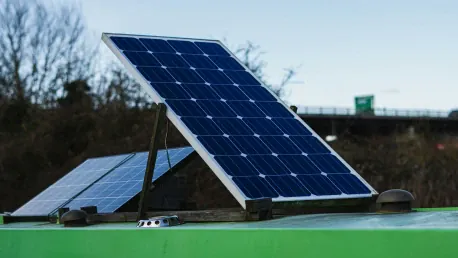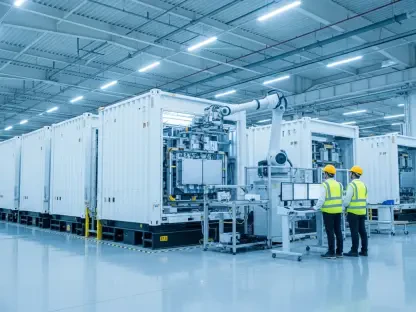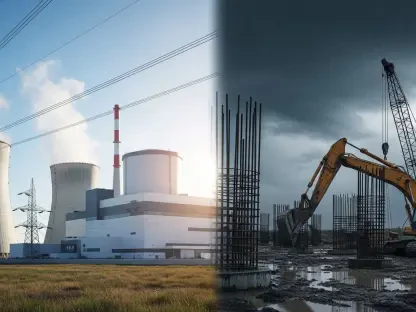In the face of escalating climate change and the urgent need to mitigate environmental impacts, decarbonizing heavy-duty industrial processes such as mining has risen to prominence as a critical challenge. Various industries, especially those with substantial energy demands like mining, are under increasing pressure to find clean energy alternatives. Quaise Energy and Nevada Gold Mines (NGM) are spearheading efforts to address this pressing issue through the innovative use of deep geothermal energy to hybridize on-site power generation, thus dramatically reducing greenhouse gas (GHG) emissions.
NGM’s Commitment to Sustainable Energy
Solar Power Advancements
Nevada Gold Mines, a collaborative endeavor between Barrick and Newmont Corporation, has taken notable strides in sustainable energy solutions. NGM recently commissioned the TS Solar Power Plant, a 200-megawatt (MW) solar power facility designed to address a significant portion of their energy needs. This state-of-the-art plant currently provides 17% of NGM’s annual power requirements, contributing to a substantial reduction of carbon dioxide emissions by 234,000 tons each year. The implementation of this solar power plant is a crucial component of NGM’s broader strategy to cut overall GHG emissions by 30% by the year 2030, underlining their steadfast commitment to environmental responsibility and sustainability.
The commissioning of the TS Solar Power Plant represents more than just a step towards reducing NGM’s carbon footprint; it is a powerful affirmation of their ongoing dedication to integrating renewable energy into their operations. By investing in such large-scale renewable energy projects, NGM is setting a benchmark for other companies in the mining industry and beyond. Their efforts demonstrate how heavy industry players can transition to cleaner energy sources without compromising operational efficiency. Moreover, this move significantly aligns with global efforts to mitigate climate change by decreasing reliance on fossil fuels and curbing hazardous emissions.
Exploring Geothermal Energy
While the TS Solar Power Plant is an impressive milestone, NGM’s commitment to sustainable energy does not stop there. To further shrink their environmental impact, NGM has partnered with Quaise Energy to embark on an ambitious exploration of deep geothermal energy sources. This collaboration aims to integrate geothermal energy into their existing power generation framework, creating a hybrid system that enhances energy sustainability. By leveraging the underground thermal energy extracted from the Earth’s crust, NGM plans to significantly reduce their dependence on conventional carbon-based electricity, marking a pivotal shift towards greener industrial practices.
Geothermal energy, in the context of this collaboration, offers several advantages over other renewable sources. Unlike solar or wind energy, which are intermittent and highly variable, geothermal power provides a stable and continuous energy supply. Quaise Energy’s innovative approach involves tapping into high-grade geothermal heat by utilizing millimeter wave technology and existing drilling infrastructure. This method not only accesses deeper and hotter geothermal reservoirs but also potentially enhances the global accessibility and power density of geothermal energy. This technological advance could pave the way for geothermal energy to become a primary sustainable and reliable baseload power source for heavy industries.
Innovations by Quaise Energy
Millimeter Wave Technology
Quaise Energy, a spinoff from MIT’s Plasma Science and Fusion Center, is at the forefront of geothermal technology innovation, having developed an advanced method to harness deep geothermal resources using millimeter wave technology. This cutting-edge approach targets deeper and more geothermal reservoirs that were previously inaccessible with existing drilling techniques. The millimeter wave drilling system relies on powerful electromagnetic waves to penetrate rock formations, thereby reaching and exploiting geothermal sources with significantly higher temperatures. By focusing on deeper layers, Quaise Energy’s technology ensures the extraction of more efficient and potent heat for electricity generation.
The millimeter wave drilling technology is particularly notable because it transforms the feasibility and scalability of geothermal energy projects. By utilizing existing drilling infrastructure, Quaise Energy minimizes both the capital and environmental costs typically associated with the development of new geothermal facilities. This groundbreaking technique not only optimizes the process of accessing geothermal energy but also promises to render it more commercially viable and universally available. Consequently, this innovation is poised to accelerate the adoption of geothermal energy across various sectors, providing a sustainable alternative to traditional fossil fuels.
Commercial Potential and Field Demonstrations
The promise of Quaise Energy’s millimeter wave technology has attracted significant financial backing, including $21 million in Series A1 financing led by Prelude Ventures and Safar Partners. This substantial investment has been channeled into ongoing development efforts and the planning of imminent field demonstrations of their pioneering drilling technology. These practical trials are crucial for validating the efficiency and robustness of the system in real-world conditions, ultimately paving the way for its broader deployment within the energy sector. A successful demonstration would signify a transformative breakthrough, demonstrating the commercial and operational viability of deep geothermal energy as a mainstream power source.
The implications of successfully integrating Quaise Energy’s technology into commercial applications are vast and transformative. By proving the scalability and efficiency of millimeter wave drilling in generating high-grade geothermal power, this collaboration could significantly shift the energy paradigm in heavy industries like mining. The ability to retrofit existing power plants with this innovative technology highlights a practical approach to transitioning from fossil fuels to renewable energy. Additionally, the potential expansion into other industrial sectors underscores the versatility and impact of deep geothermal energy in achieving global sustainability goals.
Broader Impact and Future Directions
Transitioning from Fossil Fuels
One of the overarching themes highlighted by the collaboration between Quaise Energy and Nevada Gold Mines is the broader transition from fossil fuels to renewable energy sources. This shift is integral to meeting the climate targets set by global accords, such as the Paris Agreement, and to ensuring a sustainable future. The development and commercial deployment of deep geothermal energy play a pivotal role in this transition. By providing a consistent and high-density energy supply, geothermal energy can effectively complement other renewable sources, addressing the limitations posed by their intermittency. This synergy not only enhances energy security but also drives down overall greenhouse gas emissions.
The project’s focus extends beyond simply replacing fossil fuels; it also emphasizes the retrofit of existing industrial and power generation infrastructure to accommodate cleaner energy sources. The conversion of NGM’s plant is a significant commercial pilot that demonstrates deep geothermal energy’s potential to reduce reliance on fossil fuels while meeting heavy industry’s immense energy demands cost-effectively. This aspect is particularly crucial as it offers a practical pathway for other industries with legacy fossil fuel infrastructure to transition to greener alternatives with minimal disruption to their operations.
Industry-Wide Implications
Faced with escalating climate change and the urgent need to minimize environmental impacts, decarbonizing heavy-duty industrial processes like mining has become a critical priority. Industries with high energy demands, particularly mining, are under increasing pressure to adopt clean energy solutions. Leading this initiative are Quaise Energy and Nevada Gold Mines (NGM), who are pioneering the use of deep geothermal energy to hybridize on-site power generation. This innovative approach aims to significantly decrease greenhouse gas (GHG) emissions.
Deep geothermal energy involves tapping into the Earth’s sub-surface heat to generate power, proving to be a sustainable energy source. By integrating this technology, Quaise Energy and NGM are not only reducing their carbon footprint but also leading the mining sector towards more sustainable practices. As global temperatures rise and environmental concerns intensify, the success of such initiatives could pave the way for broader adoption across various industries, marking a substantial step forward in combatting climate change.









